Finding Disruptive Approaches to Solving Problems by Heap CEO

In this episode of The Product Podcast, Ken Fine CEO of Heap sat down to uncover the common themes of his problem-solving mechanisms, ways to set a direction as a Product Leader through qualitative and quantitative data, and the importance of decentralizing this data across teams.

Tell us about your own story, how did you get started?
My background originally was technical. So, I started my career as a Naval officer, and I worked for the Navy as an engineer and as a physicist. I did that for about five years. And during that time I really fell in love with the process of solving hard technical problems and doing it in team environments, with the intent of building; building great technology and great products. After completing that process, my service of about five years, I became interested in applying some of that learning to private industry. So, I moved to California, came out to Silicon Valley, went to business school here, and then I’ve spent the last 20 plus years predominantly in high growth B2B SaaS companies that are doing something interesting and disruptive with large amounts of data and some type of algorithmic intellectual property sitting on top of that dataset to extract value from data. I started my career there in product, so a lot of my experience has been in product management; building the products, and building product teams. I did that at a company called Financial Engines and then at Medallia, and then over time moved into more general management roles, COO and now CEO.
Is there any common theme in terms of problems that you are excited about solving?
Common themes for me are finding new ways to do things, so disruptive approaches to solving problems that have been around for a while. So, in my case, the themes that have evolved are when people are trying to make sense of a lot of data. In the case of Medallia, for example, it was the qualitative voice of the customer data. In the case of Heap, it’s quantitative journey data. But how do you take all this data in an organized and technology-aided way to quickly and precisely find the insights that matter and act on them? So that’s been a common theme, so a lot of data and a lot of math. And then how do you simplify the interface for consumption?
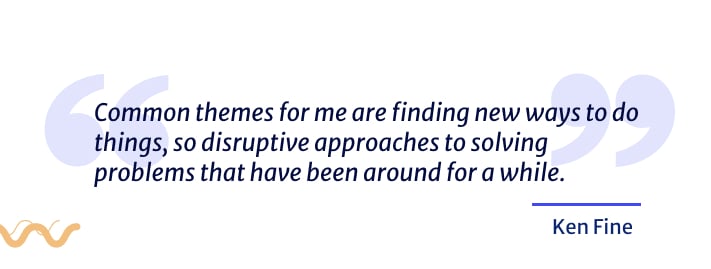
What is the right balance between data and art you’ve seen in product management?
I think there’s a couple of different dimensions for me. This wasn’t explicitly what you asked, but I think it’s part of my point of view but one, is there a balance between quantitative data and qualitative data. In the case of Heap, quantitative journeys and clicks and events and interactions and time. And then qualitative data, specifically the voice of the customer data. And I do believe that developing a total picture requires both and truly getting it as a product manager and getting exposure to both not only helps you solve the problems but starts to inform your intuition. You start to understand your customers and how they think and where their challenges are. With respect to micro iteration versus Steve Jobs’s vision, I do believe that as a product leader, you do need to be able to set a direction. So many people call that a vision. What is the endpoint we’re trying to reach? What does success look like? What is the change we’re trying to make? What are the problems we’re trying to solve? And then I think you can approach that with lots of continuous improvement. Kaizen, as the Japanese would call it, in manufacturing systems. I don’t think every step along the way has to be a step function breakthrough.
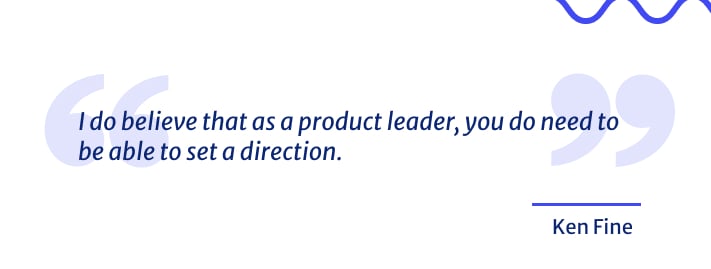
How can non-data people access and get insights from data?
So now, as you think about the way digital journeys and digital experiences have evolved, I’ll just take a step back and I’ll answer your question. You go back, let’s say a couple of decades ago, the internet was largely marketing brochures. If you now advance to today, it’s the total experience. Many companies are digitally native. Literally, that’s all there is. There is no physical experience. As a result, the need for speed and agility has increased dramatically. You need to be able to experiment, learn quickly, make changes, and understand the impact of your changes. And to do that, I believe that you do need to decentralize access to that data. So, one of the ways you do that is through platforms like Heap, which can be consumed by centralized data teams but is really designed from the ground up for practitioners, product managers, and also marketers that work in acquisition to understand the data to then have the insight service in a way that is understandable for someone with that background. This means you don’t have to have a Ph.D. in mathematics or data science to understand what’s coming out of those platforms or you shouldn’t.
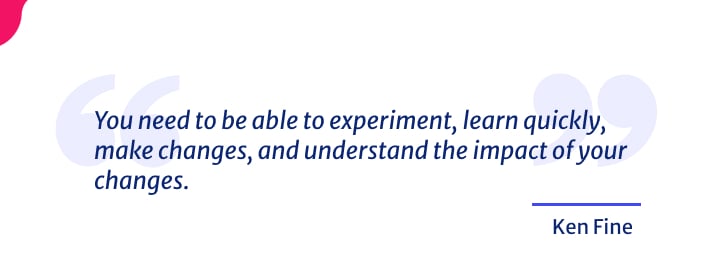
How would you position Heap to make it different?
In the world of what is now being called product analytics or digital product analytics, Heap’s approaches are distinctive in two ways.
First, as it relates to the world of a product manager, if you want to understand the digital experience and the experiences of your users, the first point is that Heap captures the entire digital journey. So literally if you went live with Heap today on July 14th, we capture every digital interaction, every click, every swipe, every form submission, and keep it forever so that if something happens or if you have a hypothesis that you want to drill down, it’s all there. So, you have a complete record of all interactions. That’s piece one that’s different about Heap.
Piece two is new. So when I joined, my hypothesis about Heap was ‘Wow, this is an impressive step one of technology capturing this data.’ But the real value, again, speaking as a former product manager, likely lies latent in this massive dataset meaning nuggets of value that we’re not finding. We may not even know what to look for. So what we’ve done now is built a data science layer that we’ve worked on for the last year and a half. It has been purpose-built specifically from the ground up to leverage this massive dataset and start to proactively extract the insights that are relevant to a product manager and understanding journeys in a way that you couldn’t do manually. So now we can take these enormous datasets and very quickly get you to the nuggets and highlights within that data set that are relevant to your product.
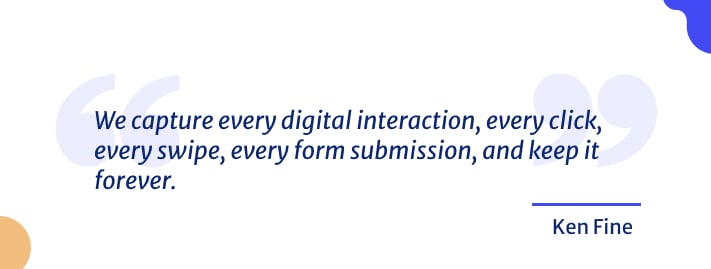
What is the overall status of the different offices across the US and their business today?
So in terms of how we operate, we’re operating in what I would describe as a hybrid model where you can work virtually at Heap, from any place in the world. We have retained our offices in San Francisco, New York. So for those who prefer to be in an office, you can be at an office. And we use that now for getting the team together and for enablement and training and for socialization. In terms of size, we’ll be passing through several hundred employees this year and growing aggressively.
As a CEO, what does your day-to-day look like?
What does my day-to-day look like? So when I think about what the role of a CEO is, a few things come to mind for me. One is to ensure the company has the right strategic direction. Are you pointing the ship in the right way? The second is do you have the right teams and the right teammates? And are you doing the right things to enable them to make good decisions to hit their goals? Do they have the resources? Do they have the right relationships? Do they have the right environment? And then the third is the right culture and culture can be an abstract and nebulous term. I think the biggest driver of culture is our values. To make values work, I believe you need crisp, stated behaviors that make values come to life so people act in a way that emulates those values.
So, if you were to take my day in color-coded, probably 80 plus percent is related to activities in service of evaluating, iterating, and improving our strategy. So working sessions, lots of interviews, or work with teams, skip-level meetings, getting feedback about what’s working or not working, enabling certain teams to be effective, as well as working on modeling and training on values and behaviors. And then the last piece for me is always to be spending time with customers and prospective customers. I believe that in virtually any role, certainly a product role, you need to not only be explicitly gathering that feedback, because I said there’s a non-obvious benefit that a lot of people miss as it relates to spending time with customers, which is that it informs your intuition. You just start to think and feel the way your customers think, and therefore you’re able to make decisions better and faster. So between those four items, I think that rounds to the vast majority of my day each day.

As you’ve worked in different leadership roles, is there any mark of great leadership that helped you get to where you are today?
I don’t think there’s one single leadership model. To some degree, you need to understand who you are. You and I were talking before about how there isn’t one recipe for a CEO. There are different ways to be successful as a CEO. But, I have developed a point of view on leadership and it’s certainly one that I embrace and one that I’ve seen in strong leaders that I seek to emulate. There are basically three pieces to it.
One is around leadership culture and philosophy. I believe some of the most effective and most impactful leaders that I’ve worked with, teamed with, or worked for are those that balance two things. One is accountability and the other is empathy. So by accountability, I think strong leaders are very clear about what success is. How do we know if we’re successful? If it’s something that can be measured, how do we measure it? Who owns it? Who’s the single person that’s accountable? But you balance that with empathy; being a good human being, being supportive, providing the support that people need, it’s through empathy and the support that I believe you earn the right to hold people accountable. I believe that great leaders find that special balance. I’ve worked with people who are heavy on empathy and less on accountability and vice versa.
The second piece for me is I think strong leaders are good at setting a clear strategy, direction, and vision. Whether it comes from someplace within, through a group development process, or working with customers, that’s a place you need to get to. People need to know what success is and what we’re trying to achieve.
And then the last piece actually came to me through a book. I read a book called Multipliers. I think it was written by Liz Wiseman. You can look it up on Amazon. It’s a book about leadership and specifically certain types of leaders who are unusually good at getting an outcome or building teams that are better than the proverbial sum of their parts. So, those who are very good at getting people to perform at their collective best. And there are a series of tactics and strategies advocated in that book, which came from a study of leaders that I’ve tried to learn to move more and more in the multiplier direction.
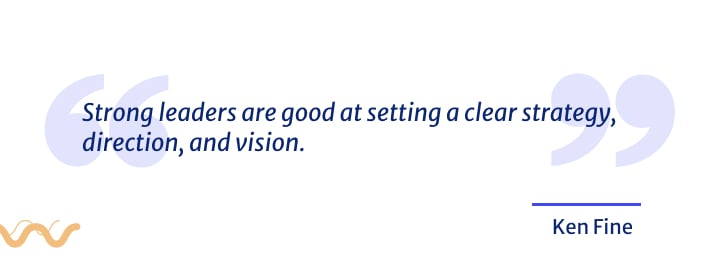
What are you curious about learning these days and how do you make time for it?
So when I graduated from business school, I started as part of an early team just after this particular company, called Financial Engines, was founded and I was there for a long time. So I was there from basically founding through growth through IPO, post-IPO, and then I left. And when I left, I did some reflection and thought about what’s next. Part of what’s next for me was what stage of the company. Do I want to be a founder? Do I want to go in that early seed series A or do I want to go in later? Having seen a long journey, now a public company that was multi-hundred million of revenue when I left, I made a decision that I wanted to focus on the growth stage and that was an area that I found particularly exciting.
So getting to your question on learning, I view that as an art form, as a craft, and I’ve tried to embrace growth stage leadership as my craft. Before my craft was that and product, and now it’s moved on to product in the broader sense; running product and facing organizations and companies. So the areas I focus on are my skills as a leader, and really understanding growth stage dynamics. I do that in part with a coach. I’m a part of an organization called 10XCEO, which helps pair CEOs with other CEOs building similar companies.
It’s almost like having an external board of directors. And then the other area I focus on specifically is product line growth that is a newer and rapidly developing evolution of go-to-market motion, as I’m sure your listeners are aware. I don’t view PR product lead and sales lead necessarily as two totally separate worlds, but rather there’s an artful integration of the two. That’s another area that I’m educating myself on by frequently reading, listening, talking to people who have been successful in the area, and figuring out how to bring that effectively to Heap.
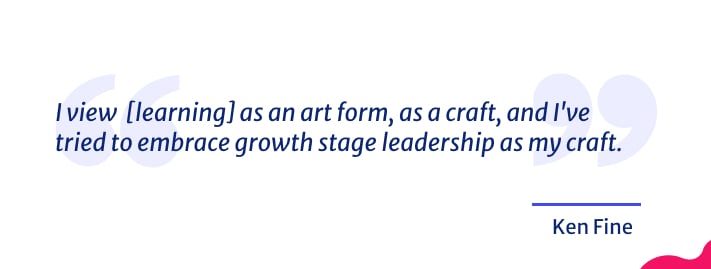
Most of the time, what we accomplish is related to work, but it can also be learnings related to life that somehow end up connecting to other areas of your life.
I totally agree. At this point, I’ve been doing growth stage companies since the late 90. So over 20 years, and I’m still actively learning. There’s still lots of trial and error and failures and setbacks and debriefs and saying, okay, here’s what I’ve learned, now lets up my game. In fact, in my case, one of the reasons I’m at Heap is that after my last company was acquired, I did some reflection and made a personal decision, which was, I felt that I hadn’t yet done my best work. I hadn’t yet made the biggest contributions that I can make. And I felt that I couldn’t stop and take a break until I had made those contributions. And that’s really all about learning.

I don’t think that just one person alone can do everything that you need, but having that collective knowledge from different people, and growing at the same time. It’s really powerful.
I strongly agree. Anyone person could give you a nugget. Just one nugget of advice or insight or direction that resonates with you. You grab it, you run with it, you apply it and maybe implement it at your company or on your team and it has a big impact. I mean, I can pick certain mentors I’ve worked with that had an impact on specific areas of things they coached me on.
Have you seen examples of people who can leverage Heap or other tools out there to build something on the side to learn or to prove that they can do it before they commit themselves to something more permanent?
I have and I’ve done that myself as well. I do think that, depending on what the bet is and what you want to build, eventually you’ll get to a point where you have to make a decision. Do you want to bet on X and then give it the proper focus? But I absolutely personally experienced and saw Heap also used as a toolkit to basically test a direction, test a hypothesis, test an idea. So, in my case, this is a non Heap example but when I was at this company, Financial Engines, the team I was with had a hypothesis about a particular product direction that leveraged some of our current technology but was very different in terms of the economics. Dramatically different meaning if this direction was successful, it could mean an enormous pivot for the business. So the way we kind of tested the side bet was that we time-boxed it. And we said we’re going to take around three or four weeks. And we took a small team and we worked intensely on developing a hypothesis, creating some prototypes, and mock-ups, getting out with customers and we still had our day jobs.
Then we came back to the broader company, said, ‘Hey, look, take a look at this. Here is what we’re thinking. And here’s some initial feedback. And the initial feedback was so compelling that, long story short, we ended up pivoting to that product and actually ended up ultimately pivoting the whole company. But it wouldn’t have happened had not a small group of us got together and said, you know, I just think this is a better direction. No one’s willing to believe as yet so we got to do something and we’re gonna have to put it on our backs a little bit. We’re gonna have to carve out some extra time and some extra energy so that we can bring back something. And then maybe we’re wrong, but then we’ll learn that as well. So I do think there’s a place for that. I think that’s where great leaders and great initiative often show up.
Yeah, I love that analogy. And some people on Amazon call it the Two Pizza Teams. Like when you are too big, at some point, it’s hard to keep your eyes on the ground. And they created a small squad that can lead a specific initiative, tests something before they overly invest in it. It’s important, no matter what the size of the company is. And I think if anything, now it’s probably less complicated with the tools that we have. I remember back in the day, you pretty much had to be an engineer and reinvent the wheel in order to build something digital. Now, thanks to tools like Heap and others, you can build something without code. You can put it out there, you can get data and focus more on adding value rather than recreating the next big website.
I’d agree with that. And I think the key to those types of ideas or explorations being successful; successful meaning that you may prove that it’s a good direction or not is to be hypothesis-driven. So be crisp about what it is you are trying to learn. In fact, I’ll use an example. I once had a mentor when I was working on an exploration, a hypothesis, who said ‘Well, Ken, why don’t you write down the report? It shows the results of the thing you want to test before you run the test’. I looked at him confused at how I can write the report for the results before I run the test. He says ‘Just trust me, just go create a fictitious report. One pager’. And what I learned from that exercise was it forced me to think much more rigorously about what I am trying to prove. What is my hypothesis? What are the metrics that I want to see? What is red, yellow, and green? What is successful here? What is unsuccessful? And as a result, I dramatically changed my test. Now I had a test where the outcome would prove or disprove my hypothesis better. So that would be one learning I’ve had around these explorations.
I think when we try to create a hypothesis, we’re ultimately biased towards validating that hypothesis. And thinking broadly about maybe disqualifying the hypothesis is a success as well. And going there with more of an open mind, rather than trying to guide the experiment, can ultimately lead to what you want, which is the truth, instead of your own vision for your product.
You’re right. Failing fast can be a success. I think creating a culture where that is recognized and even rewarded is a good thing. And I would say, as I look back on my experience as a product leader and running product teams, a role that I would often take was in working with a team that was running some type of test or doing some type of exploration. Sometimes I would push the team on and say ‘Hey, this is our third or fourth or fifth rev of this idea. And the results don’t seem to be changing very much. And I know the team is very attached to it but maybe it’s time to kill this. Maybe this isn’t the right thing, but we’re pivoting, we’re pivoting, we’re pivoting, we’re pivoting. We’re not progressing. So I don’t want to slow down people’s enthusiasm for pursuing greatness, but there is also a point to say ‘Hey, maybe this isn’t the right idea. It’s okay. Let’s generate other ideas’.
For people working in product, what is something tangible that they can take home today to help them grow their career?
If I were a product manager today, and somehow I knew everything that I know – so 30 years of working in technology and 25 years in B2B SAS companies, the things that I would invest in are the following. I’m not saying this is the only way to get to a good outcome, but this is just what I would do.
There are three areas that I would focus on personally. One is that I would really ensure that I have a good understanding of basic fundamental dev technologies. That doesn’t mean you have to get an undergrad in computer science though. I suppose if I were in undergrad now, it’s probably what I would study. But that could mean self-teaching. It could mean doing a six-week boot camp, but having some understanding of the implementation. For me, that’s piece one. If I could reset now and go back 20 years, that is what I would do.
Number two is that because I’ve learned design, I think the power of understanding the tech layer is all about communication. How do you communicate complex things in simple ways? So understanding interaction, design, visual design, doesn’t mean become a designer, but you certainly can. But, I’m saying even as a product manager, understand that piece.
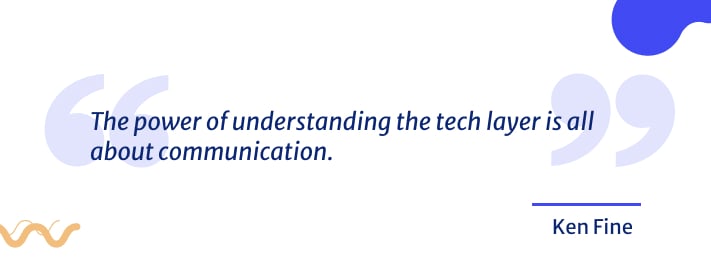
Then the third for me is to develop a toolkit around customer intimacy. How do you understand customers? If you parachuted in today to a new organization that you’re running or a part of, and someone said, ‘Hey, how do you understand customers? What tools do you use? What practices have that?
And I think if you have all three of those, now you have the ability to understand the customer’s situation, their problems, and test different solutions. And you have a sense of implementation possibilities. You have a sense of what technology can do. You have a sense of design. You can help with prototyping and quick learning. That would be my trifecta if I could go back as a PM today.
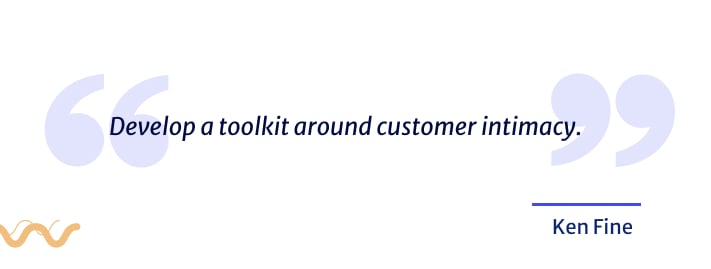
Catch us again next week for another episode of Product CEOs to keep learning!
